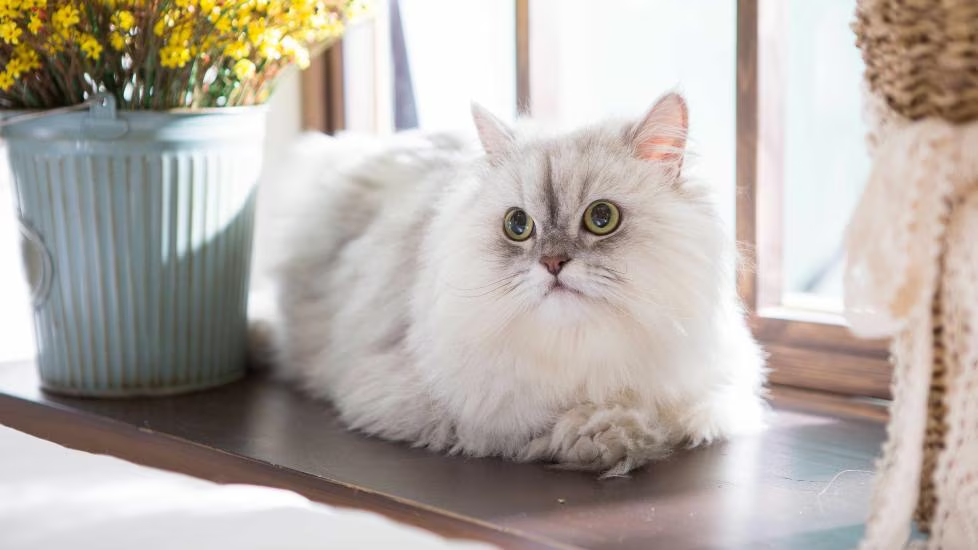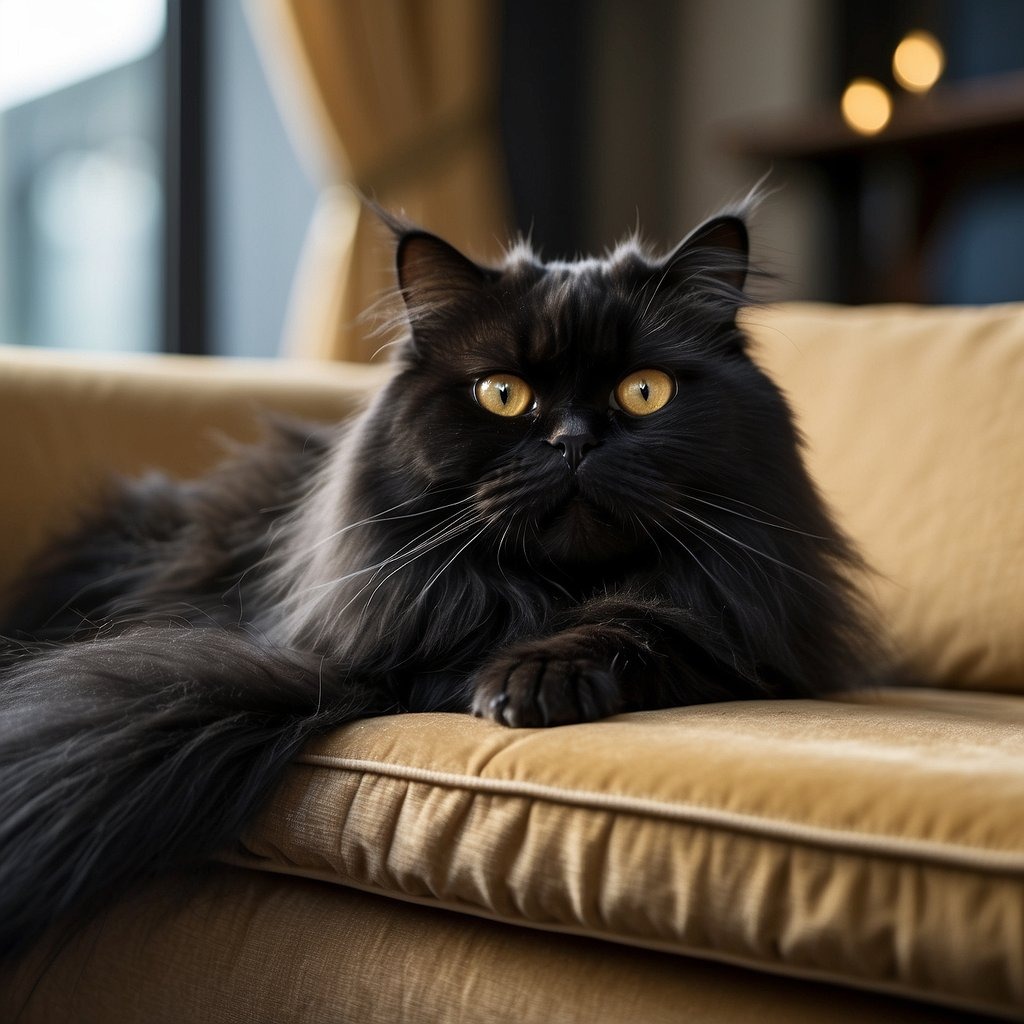Outline
Introduction
Brief overview of Persian cats
Why they’re popular pets
The History and Origin of Persian Cats
Ancient Roots
Development of the Breed
Persian Cats in Modern Times
Physical Characteristics of Persian Cats
Unique Features
Coat Colors and Patterns
Size and Build
The Gentle and Loving Nature of Persian Cats
Affectionate Companions
Ideal for Families
Compatibility with Other Pets
Persian Cats as Low-Energy Pets
Calm and Relaxed Disposition
Perfect for Indoor Living
Minimal Exercise Needs
Health and Lifespan of Persian Cats
Common Health Issues
Tips for Maintaining Health
Lifespan Expectations
Grooming Needs of Persian Cats
Daily Grooming Routine
Dealing with Shedding
Grooming Tools and Products
Feeding and Nutrition for Persian Cats
Dietary Requirements
Recommended Food Types
Avoiding Obesity
Training and Socialization of Persian Cats
Basic Training Tips
Socializing with Humans
Introducing to Other Pets
Persian Cats and Children
Building a Bond
Teaching Children to Care for Cats
Ensuring Safety
Creating a Comfortable Home Environment for Persian Cats
Ideal Living Space
Essential Accessories
Safe Outdoor Time
The Emotional Benefits of Owning a Persian Cat
Stress Reduction
Companionship
Mental Health Improvement
The Financial Considerations of Owning a Persian Cat
Initial Costs
Ongoing Expenses
Budgeting Tips
Adoption and Purchasing Tips for Persian Cats
Finding Reputable Breeders
Considering Adoption
Preparing for Your New Cat
Conclusion
Summary of Benefits
Final Thoughts
FAQs
What is the average lifespan of a Persian cat?
How often should I groom my Persian cat?
Are Persian cats good with children?
What should I feed my Persian cat?
How can I keep my Persian cat healthy?
What Are the Benefits of Owning a Persian Cat?
Introduction
Owning a Persian cat is like having a fluffy, gentle friend who is always there to keep you company. These beautiful creatures have been cherished pets for centuries, and their popularity only seems to grow. But what exactly makes Persian cats such wonderful companions? Let’s dive into the myriad benefits of owning a Persian cat.

The History and Origin of Persian Cats
Ancient Roots
The origins of Persian cats can be traced back to ancient Persia (modern-day Iran), where they were prized for their luxurious, long coats and serene nature. These cats were often depicted in art and literature, symbolizing grace and beauty.
Development of the Breed
Over the centuries, Persian cats were bred selectively to enhance their distinct features, such as their long fur and flat faces. This selective breeding has resulted in the charming and unique appearance they are known for today.
Persian Cats in Modern Times
Today, Persian cats are one of the most popular and recognizable breeds worldwide. They are adored for their elegant appearance and gentle disposition, making them ideal pets for a variety of households.
Physical Characteristics of Persian Cats
Unique Features
Persian cats are easily identifiable by their round faces, short noses, and large, expressive eyes. Their thick, luxurious fur is another standout feature that requires regular grooming to maintain.
Coat Colors and Patterns
Persian cats come in a wide range of colors and patterns, from solid shades like white and black to intricate tabby and bi-color patterns. This variety allows potential owners to choose a cat that perfectly matches their aesthetic preferences.
Size and Build
Generally, Persian cats have a sturdy build with short legs and a rounded body. They are medium to large in size, typically weighing between 7 and 12 pounds.
The Gentle and Loving Nature of Persian Cats
Affectionate Companions
One of the most endearing traits of Persian cats is their affectionate nature. They love to snuggle and are known for forming strong bonds with their owners. This makes them excellent companions for those seeking a loving and loyal pet.
Ideal for Families
Persian cats are gentle and patient, making them ideal for families with children. They are tolerant of gentle handling and can become wonderful playmates for kids.

Compatibility with Other Pets
Persian cats generally get along well with other pets, including dogs and other cats. Their calm demeanor allows them to integrate smoothly into multi-pet households.
Persian Cats as Low-Energy Pets
Calm and Relaxed Disposition
Unlike some more active cat breeds, Persian cats have a calm and relaxed disposition. They are content to spend their days lounging and napping, making them perfect for owners who prefer a more tranquil pet.
Perfect for Indoor Living
Persian cats thrive in indoor environments where they feel safe and comfortable. Their low-energy nature means they don’t require a lot of space or outdoor time to be happy.
Minimal Exercise Needs
While all cats need some exercise, Persian cats don’t demand extensive physical activity. A few play sessions each day with toys or interactive games are usually sufficient to keep them healthy and entertained.
Health and Lifespan of Persian Cats
Common Health Issues
Like all breeds, Persian cats are prone to certain health issues, including respiratory problems due to their flat faces, and eye conditions. Regular veterinary check-ups are essential to monitor and address these issues early.
Tips for Maintaining Health
Maintaining a Persian cat’s health involves a balanced diet, regular grooming, and ensuring they get enough exercise. It’s also crucial to keep their living environment clean to prevent infections.
Lifespan Expectations
With proper care, Persian cats can live between 12 and 16 years. Some even reach their late teens, providing many years of companionship and joy.
Grooming Needs of Persian Cats
Daily Grooming Routine
Persian cats require daily grooming to keep their long fur tangle-free and clean. Brushing their coat helps prevent mats and reduces shedding around the house.
Dealing with Shedding
Persian cats shed throughout the year, with more intense shedding periods during seasonal changes. Regular grooming can help manage shedding and keep your home fur-free.
Grooming Tools and Products
Investing in quality grooming tools, such as a slicker brush and a metal comb, is essential. Additionally, occasional baths and the use of cat-safe grooming products can help maintain their coat’s health and shine.
Feeding and Nutrition for Persian Cats
Dietary Requirements
A balanced diet rich in protein and low in fillers is crucial for Persian cats. High-quality commercial cat foods designed for their specific needs can help keep them healthy and energetic.
Recommended Food Types
Wet food can be beneficial for hydration, while dry kibble helps maintain dental health. Mixing both can provide a balanced diet that covers all nutritional bases.
Avoiding Obesity
Due to their low-energy nature, Persian cats can be prone to obesity. Monitoring their food intake and ensuring they get regular exercise can help prevent weight gain and related health issues.
Training and Socialization of Persian Cats
Basic Training Tips
Training a Persian cat involves patience and positive reinforcement. Simple commands, such as “sit” and “come,” can be taught using treats and praise.
Socializing with Humans
Persian cats are naturally sociable and enjoy human interaction. Regular playtime and gentle handling can help strengthen their bond with their owners.
Introducing to Other Pets
When introducing a Persian cat to other pets, it’s essential to do so gradually. Allow them to become familiar with each other’s scents before face-to-face meetings to ensure a smooth transition.
Persian Cats and Children
Building a Bond
Children and Persian cats can develop strong bonds through play and gentle interaction. Supervising initial interactions can help ensure both the child and the cat feel comfortable.

Teaching Children to Care for Cats
It’s important to teach children how to handle cats gently and respect their space. Involving kids in feeding and grooming routines can also help foster a sense of responsibility.
Ensuring Safety
Safety is paramount when children and pets are involved. Always supervise their interactions to prevent accidental injuries and ensure a harmonious relationship.
Creating a Comfortable Home Environment for Persian Cats
Ideal Living Space
A quiet, cozy space where your Persian cat can retreat and relax is essential. Providing a variety of comfortable resting spots, such as cat beds and perches, can enhance their well-being.
Essential Accessories
Essential accessories include scratching posts, litter boxes, and a variety of toys to keep them entertained. These items contribute to a stimulating and comfortable home environment.
Safe Outdoor Time
If you allow your Persian cat outdoor access, ensure it’s a safe, enclosed area. Supervised outdoor time can provide mental stimulation and a change of scenery.
The Emotional Benefits of Owning a Persian Cat
Stress Reduction
Owning a Persian cat can significantly reduce stress levels. Their calm demeanor and affectionate nature provide a soothing presence that can help alleviate anxiety.
Companionship
Persian cats are loyal companions who enjoy spending time with their owners. Their constant presence and affectionate behavior can help combat feelings of loneliness.
Mental Health Improvement
Interacting with a Persian cat can boost your mood and provide emotional support. Their playful antics and gentle purring can bring joy and improve overall mental well-being.
The Financial Considerations of Owning a Persian Cat
Initial Costs
The initial costs of owning a Persian cat include the purchase price or adoption fee, vaccinations, and initial grooming supplies. These expenses can vary depending on the source.
Ongoing Expenses
Ongoing expenses include food, grooming, veterinary care, and other necessities. Budgeting for these costs is essential to ensure you can provide the best care for your pet.
Budgeting Tips
To manage expenses, consider pet insurance to cover unexpected veterinary costs. Additionally, buying food and supplies in bulk can help reduce ongoing costs.
Adoption and Purchasing Tips for Persian Cats
Finding Reputable Breeders
If you decide to purchase a Persian cat, it’s crucial to find a reputable breeder who prioritizes the health and well-being of their animals. Avoid breeders who engage in unethical practices.
Considering Adoption
Adoption is a wonderful alternative to purchasing from a breeder. Many Persian cats in shelters and rescue organizations are in need of loving homes.
Preparing for Your New Cat
Before bringing a Persian cat home, ensure you have all the necessary supplies and a safe, comfortable space for them to adjust. This preparation can help ease their transition into your home.
Conclusion
Owning a Persian cat comes with numerous benefits, from their loving and gentle nature to their calming presence and beautiful appearance. They make wonderful companions for families, individuals, and multi-pet households alike. By understanding their needs and providing proper care, you can enjoy many happy years with your Persian cat.
FAQs
Persian cats typically live between 12 and 16 years, with some reaching their late teens with proper care.
Daily grooming is recommended to keep their long fur tangle-free and clean. Regular grooming helps prevent mats and reduces shedding.
Yes, Persian cats are gentle and patient, making them great companions for families with children. Supervised interactions can help ensure a harmonious relationship.
A balanced diet rich in protein and low in fillers is ideal. Mixing wet and dry food can provide a balanced diet that covers all nutritional needs.
Regular veterinary check-ups, a balanced diet, daily grooming, and sufficient exercise are key to maintaining a Persian cat’s health.
